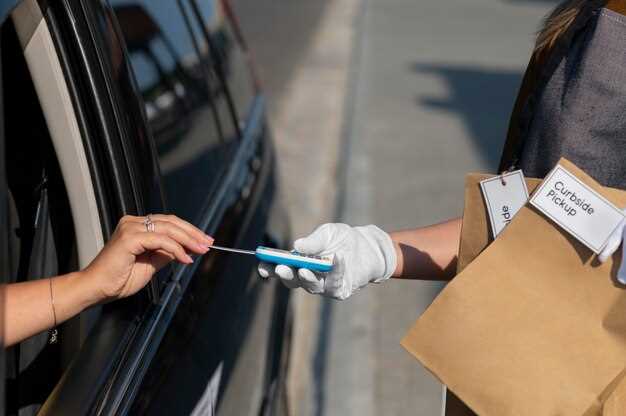

Transporting a show car requires meticulous planning and consideration to ensure the vehicle arrives in flawless condition. Whether you’re taking it to a car show, a competition, or a promotional event, the method of transport can significantly impact your vehicle’s integrity and appearance. It is crucial to understand the best practices to safeguard your prized possession during the journey.
Utilizing a trailer is one of the most effective ways to transport your show car safely. A trailer designed specifically for transporting vehicles provides the necessary support and protection, reducing the risk of damage from road conditions or other potential hazards. Choosing the right type of trailer, whether it be an enclosed or open one, plays a significant role in safeguarding your vehicle from environmental elements and debris.
Another important aspect to consider is securing your car properly within the trailer. Making use of quality tie-down straps and wheel chocks can prevent your vehicle from shifting during transport. Proper weight distribution on the trailer will also minimize the risk of accidents. By following these guidelines and planning ahead, you can ensure a safe and secure trip for your show car, preserving its beauty and value for all to admire.
Choosing the Right Car Trailer for Your Show Car

When it comes to transporting your show vehicle, selecting the appropriate trailer is crucial for ensuring its safety and preserving its pristine condition. The right trailer can make a significant difference in how well your car is protected during transport.
First, consider the size and weight of your show car. Make sure to choose a trailer that can accommodate your vehicle’s dimensions and weight capacity. Trailers come in various sizes, and selecting one that is too small can lead to damage during transport, while an oversized trailer may result in excessive movement and potential instability.
Next, evaluate the type of trailer best suited for your needs. Enclosed trailers provide superior protection against elements, road debris, and potential theft, making them an ideal choice for show cars. Open trailers, on the other hand, offer easier access and loading but may expose your vehicle to risks. Analyze the pros and cons of each type to decide what works best for you.
The construction quality of the trailer is also paramount. Look for trailers made from durable materials that can endure wear and tear over time. Features like a sturdy frame and high-quality axles will enhance stability during transport and decrease the chance of any mishaps.
Additionally, consider the towing capacity of your vehicle. Ensure that your towing vehicle can safely navigate and haul the trailer loaded with your show car. Check the manufacturer’s specifications to guarantee compatibility and performance.
Finally, don’t overlook the importance of securing your vehicle within the trailer. High-quality tie-down straps and wheel chocks are essential to prevent any movement during transport. A well-secured vehicle not only travels safely but also arrives in excellent condition, ready to impress at its next show.
Preparing Your Vehicle for Transport: Key Steps
Transporting your show car requires careful preparation to ensure its safety and condition upon arrival. Start by thoroughly cleaning your vehicle, both inside and out. This allows for a better inspection, helping you identify any pre-existing damage. Take detailed photographs from various angles, including the interior, which can serve as a reference for insurance purposes.
Next, check all fluid levels, including oil, coolant, and brake fluid. This minimizes the risk of leaks during transport. Make sure your tires are properly inflated and in good condition. It’s also advisable to remove any personal items, loose accessories, or aftermarket modifications, as these can be damaged or lost during transit.
Secure everything that cannot be removed. Ensure that windows and sunroofs are closed tightly to prevent water or debris from entering the vehicle. Additionally, disable any alarms and activate your car’s battery disconnect switch, if applicable, to prevent battery drain.
Lastly, if your vehicle features a low ground clearance, it’s essential to inform the transport company to ensure they use appropriate loading techniques to prevent potential damage. Following these steps will help ensure that your car remains in pristine condition throughout the transport process.
Securing Your Show Car During Transport: Best Practices

Transporting your show car requires meticulous attention to ensure that it remains in pristine condition throughout the journey. Proper securing methods not only prevent damage but also provide peace of mind as you transport your valuable vehicle.
First and foremost, choose a reliable trailer that is suited for your show car’s dimensions and weight. Ensure that the trailer is in excellent condition, with no signs of wear or damage. A quality trailer will provide a stable platform for your vehicle, reducing the risk of movement during transport.
When loading your car onto the trailer, use ramps that are designed for vehicles. Ensure that they are positioned securely to prevent slipping. Use wheel chocks to secure the back wheels once the car is in position. This will aid in preventing any rearward movement during transit.
After positioning your car, utilize high-quality tie-down straps to secure it. Look for straps that are capable of holding significant weight and are made from durable materials. Attach the straps to secure points on the vehicle, such as the frame or designated tie-down locations, rather than relying on plastic or fragile components. Make sure the straps are tight but not overly restrictive to avoid damaging the car’s paint or bodywork.
Additionally, consider using soft tie straps or protective sleeves to further prevent surface damage from the tie-downs. These will protect the car’s paint while maintaining a secure hold during transport.
It’s also advisable to monitor the load periodically during transportation. Stop every few hours to check the tightness of the straps and the position of the vehicle. Adjustments may be necessary, especially if you encounter bumpy roads or sudden stops.
Lastly, secure any loose items inside the vehicle to prevent them from moving around during transport. If your car has special features or accessories that could be at risk, consider removing them before loading.
By adhering to these best practices, you can ensure that your show car arrives at its destination in immaculate condition, ready to shine at its next event.





